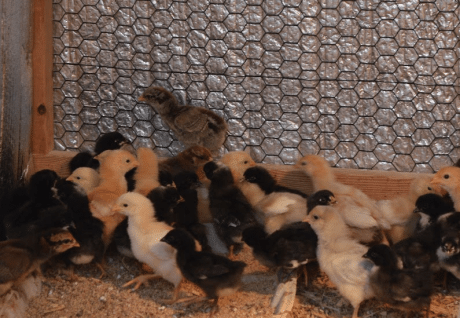Raising Poultry Increasingly a “Raw Deal” for Alabama Farmers
In the U.S., poultry production has risen leaps and bounds over the past several decades. It’s now an almost $50 billion industry. Alabama is located in the heart of what’s considered the agricultural “chicken belt” of America. In 2013, Alabama farms produced roughly 1 billion chickens. While that may make it sound like the state’s poultry farming economy is healthy, farmers tell a different story. A mere two companies control about 40 percent of the U.S. chicken market. Additionally, every one of Alabama’s chickens is produced by contract famers, and some of these farmers tell the weekly newspaper WELD that they’re getting a raw deal.
“A generation ago, before the practice of contract farming took over, the majority of farmers in Alabama (and elsewhere) owned their own chickens,” writes Cody Owens in this week’s WELD. “Now, there is not a single privately owned chicken farm in the state. It is not uncommon for farmers to take out $1 million loans in order to build houses and obtain a contract with a major company like Tyson or Pilgrim that control a large portion of the market.”
For more, WBHM’s Rachel Osier Lindley spoke with Nick Patterson, editor of WELD. Patterson joins WBHM most Thursdays during All Things Considered.
A proposed Bessemer data center faces new hurdles: a ‘road to nowhere’ and the Birmingham darter
With the City Council in Bessemer scheduled to vote Tuesday on a “hyperscale” data center, challenges from an environmental group and the Alabama Department of Transportation present potential obstacles for the wildly unpopular project.
Birmingham Museum of Art’s silver exhibit tells a dazzling global story
Silver and Ceremony is made up of more than 150 suites of silver, sourced from India, and some of their designs.
Mentally ill people are stuck in jail because they can’t get treatment. Here’s what’s to know
Hundreds of people across Alabama await a spot in the state’s increasingly limited facilities, despite a consent decree requiring the state to address delays in providing care for people who are charged with crimes but deemed too mentally ill to stand trial. But seven years since the federal agreement, the problem has only worsened.
Ivey appoints Will Parker to Alabama Supreme Court
Parker fills the court seat vacated by Bill Lewis who was tapped by President Donald Trump for a federal judgeship. The U.S. Senate last month confirmed Lewis as a U.S. district judge.
How Alabama Power kept bills up and opposition out to become one of the most powerful utilities in the country
In one of the poorest states in America, the local utility earns massive profits producing dirty energy with almost no pushback from state regulators.
No more Elmo? APT could cut ties with PBS
The board that oversees Alabama Public Television is considering disaffiliating from PBS, ending a 55-year relationship.









